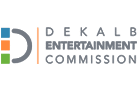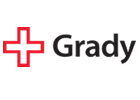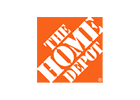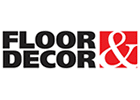By Clark Mago
For eldercare executives, increasing occupancy rates means reaching families actively searching for senior care options. Google Ads is one of the most effective ways to connect with potential residents and their loved ones at the exact moment they need your services. By leveraging a well-structured Google Ads strategy, you can drive qualified traffic, generate leads, and ultimately fill more beds.
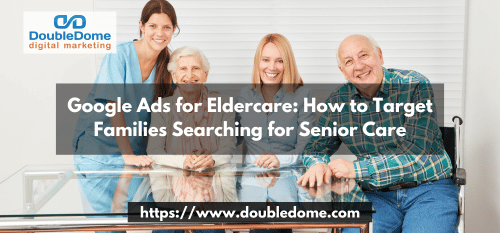
1. Why Google Ads Matter for Eldercare
Google Ads allows your facility to appear at the top of search results when families look for senior care options.
- 68% of online experiences begin with a search engine.
- 75% of users never scroll past the first page of Google.
- Paid search ads receive 65% of clicks for high-intent searches.
Action Step: Search for “assisted living near me” or “best memory care facility in [your city].” If your facility isn’t showing up, you’re missing out on potential leads.
2. Choosing the Right Campaign Type
To maximize results, eldercare facilities should focus on these key Google Ads campaign types:
- Search Ads: Text-based ads that appear at the top of Google search results when someone searches for services like “senior living near me.”
- Display Ads: Visual banner ads that appear on websites to increase brand awareness.
- Remarketing Ads: Target users who have previously visited your website but didn’t take action.
- Local Services Ads (LSAs): Verified listings that help local businesses generate direct calls and leads.
Action Step: Start with Search Ads to capture high-intent leads, then expand to Display and Remarketing for brand reinforcement.
3. Keyword Targeting: Reaching Families at the Right Moment
The key to a successful Google Ads campaign is selecting the right keywords that families use when searching for eldercare services.
High-Intent Keywords to Target:
- “Best assisted living facility in [city]”
- “Senior care homes near me”
- “Memory care for Alzheimer’s patients”
- “Independent living for seniors”
- “Skilled nursing home with rehab services”
Negative Keywords to Exclude:
- “Free senior care” (to avoid unqualified leads)
- “Jobs in senior care” (to filter out job seekers)
- “Pet-friendly apartments” (if not applicable to your facility)
Action Step: Use Google’s Keyword Planner to refine keyword selection and exclude irrelevant searches.
4. Creating High-Converting Ads
Your ad copy must be clear, compelling, and action-oriented to attract clicks and conversions.
Best Practices for Ad Copy:
Headline: Highlight your key differentiator (e.g., “Award-Winning Memory Care in Atlanta”)
Description: Provide key benefits (e.g., “Personalized care, 24/7 nursing staff, and engaging activities for seniors.”)
Call to Action (CTA): Direct users to take the next step (e.g., “Schedule a Tour Today!”)
Ad Extensions: Use site links, call buttons, and location extensions to improve engagement.
Action Step: Write at least three different ad variations and A/B test them to find the best performer.
5. Optimizing Landing Pages for Conversions
A great ad will drive traffic, but a well-optimized landing page will convert visitors into leads.
Landing Page Essentials:
- Fast Load Time: Pages should load within 3 seconds.
- Clear CTA: “Book a Tour,” “Request Info,” or “Call Now.”
- Trust Signals: Testimonials, awards, and staff credentials.
- Mobile-Friendly Design: Over 60% of searches happen on mobile devices.
Action Step: Ensure your landing page is optimized for speed and user experience using tools like Google PageSpeed Insights.
6. Retargeting: Re-Engage Interested Families
Many families research multiple facilities before making a decision. Retargeting ads remind them about your services and encourage them to return.
- Display Retargeting Ads: Show banner ads on Google’s Display Network to previous website visitors.
- YouTube Video Retargeting: Display video ads to users who watched your content but didn’t take action.
- Search Retargeting: Increase bid amounts when a past visitor searches for senior care terms again.
Action Step: Set up a remarketing audience in Google Ads to re-engage website visitors who didn’t convert.
7. Tracking & Measuring Performance
To maximize ROI, continuously track and refine your campaigns based on performance data.
Key Metrics to Monitor:
- Click-Through Rate (CTR): Are people engaging with your ads?
- Conversion Rate: How many clicks turn into leads?
- Cost Per Lead (CPL): Is your budget being spent efficiently?
- Return on Ad Spend (ROAS): Are your ads generating revenue?
Action Step: Use Google Analytics and Google Ads conversion tracking to measure results and adjust campaigns accordingly.
Conclusion
Google Ads is a powerful tool for eldercare facilities looking to fill beds and attract qualified leads. By targeting the right keywords, creating compelling ads, optimizing landing pages, and using retargeting strategies, you can:
Increase website traffic and inquiries
Engage families actively searching for senior care
Maximize marketing ROI and occupancy rates
Need expert help setting up Google Ads for your eldercare facility? Let’s discuss your strategy to build a high-performing ad strategy that delivers results.


